Fresh materials for fine jewellery design and production open exciting avenues for creativity and innovation in the trade.
The fine jewellery industry boasts materials aplenty – from precious metals, gemstones, pearls, diamonds to non-traditional options such as wood, titanium, enamel and ceramic. Designers and manufacturers draw on creativity and consumer trends to produce various iterations of themes and styles.
But every so often, fresh options emerge that widen the scope of possibilities. Given that such occurrences are few and far between, they are often accompanied by a sense of glee and excitement despite learning curves here and there.
Height of luxury
Osmium is one precious material that is generating such buzz. Sourced as a by-product of platinum mining, it is one of the world’s rarest precious metals. Only 30 grams of osmium can be found in 10,000 tonnes of platinum ore. The fact that there is never going to be more than 500 kilograms of osmium in total only heightens its appeal as a luxury material.
Highly sought after as a store of wealth, crystalline osmium has been used in luxury watches and other high-end consumer goods such as headphones and even collectible pieces such as the world’s most valuable newly built violin.
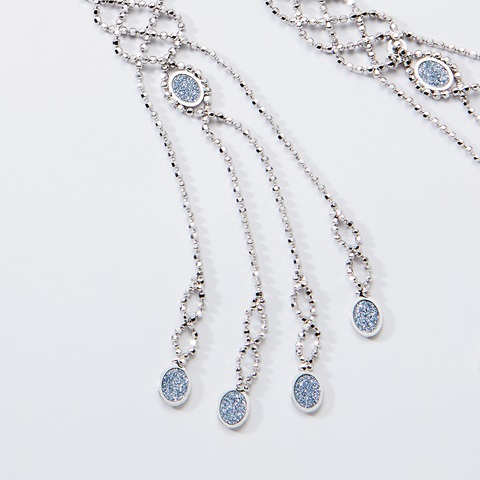
Necklace with crystalline osmium
The bluish-silver precious metal is now gaining more popularity in the jewellery world as inlays and accents for upmarket pieces. Given the nature of crystalline osmium, it can only be purchased from the Osmium Institute, which offers it in various standardised shapes and sizes. These range from rounds and squares to hearts and letters, among others.
Hong Kong-based Tania Chan holds the distinction of being the first high jewellery designer in Asia to use osmium in her jewellery pieces.
Her Palace Collection combines osmium slices with pink sapphires, amethysts and pear-shaped diamonds in one-of-a-kind multifunctional jewellery pieces.
“Osmium’s brilliance is at least 20 per cent more than that of a diamond. Its bluish-silver colour is extremely attractive and goes perfectly with diamonds and a variety of coloured gemstones, especially amethyst and fancy sapphires,” said Chan.
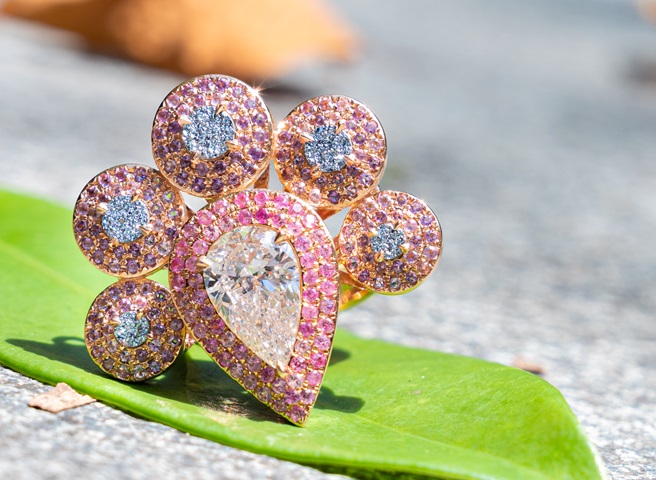
Pendant/brooch with osmium, pink sapphires, amethysts and a pear-shaped diamond from the Palace Collection of Tania Chan
Her line of osmium high jewellery includes ear hoops lined with original and yellow gold-plated osmium pieces that can be worn as a scarf ring, an amethyst ring embellished with osmium, and a Winter Sun pendant of osmium with diamonds.
Chan now serves as ambassador for osmium, delivering lectures on the material as well as specific manufacturing techniques for its application in jewellery. Osmium has since also gained a following among designers and manufacturers in the UK and Japan.
Metal innovations
Equally buzzworthy is Tusaire, the 3D-printed platinum and titanium jewellery collection by Scottish-American designer Maeve Gillies. Developed with Platinum Guild International (PGI), the Celtic-inspired collection showcases platinum in a new light while examining manufacturing challenges that need to be addressed.
Tùsaire comprises 30 one-of-a-kind statement pieces, from torc necklaces with interchangeable elements to cuffs, rings and earrings. Seven pieces are set with rare Scottish rocks including Renfrewshire quartz.
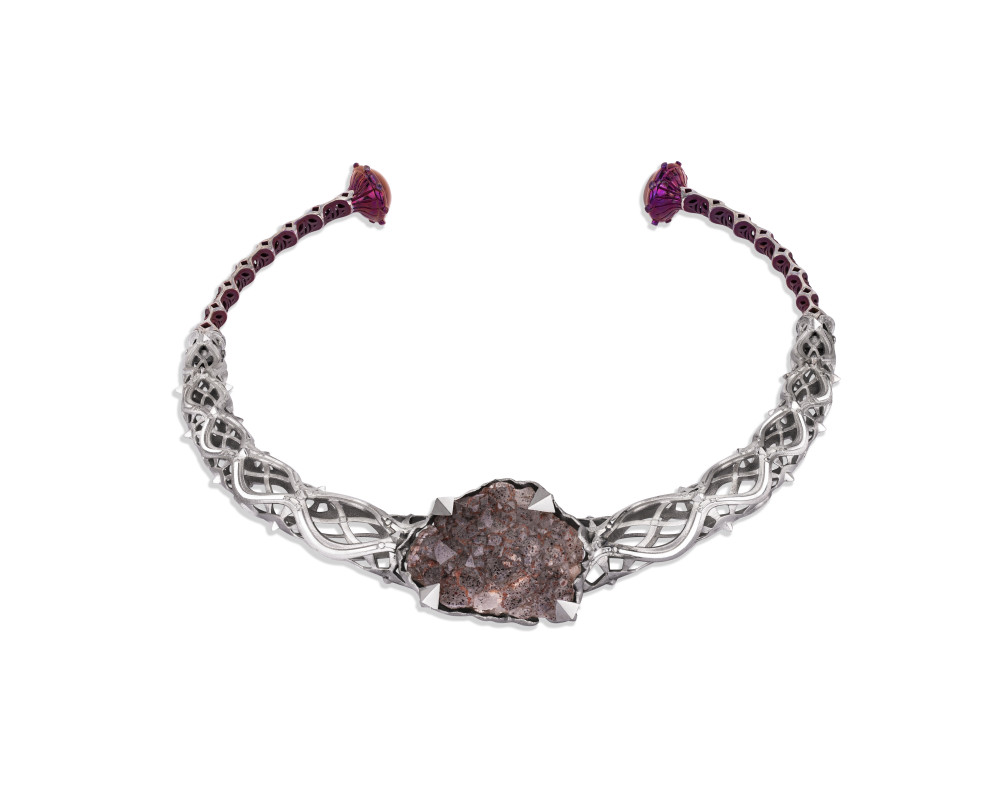
'Torc of the King of the Mountains' in 3D-printed platinum with a Scottish quartz from the Tusaire Collection of Maeve Gillies
Aside from encapsulating Gillies’ Celtic design aesthetic, the collection feature new structural creative possibilities. Hollow and ultralight, the jewellery pieces incorporate inventive surfaces that juxtapose high-polished finishes with unpolished layers with unique textures resulting from the 3D-printing process.
“My research and development process is rooted in the past while focused on the future, facilitated by the exciting world of new technologies combined with a hand-finished, precious approach,” said the designer.
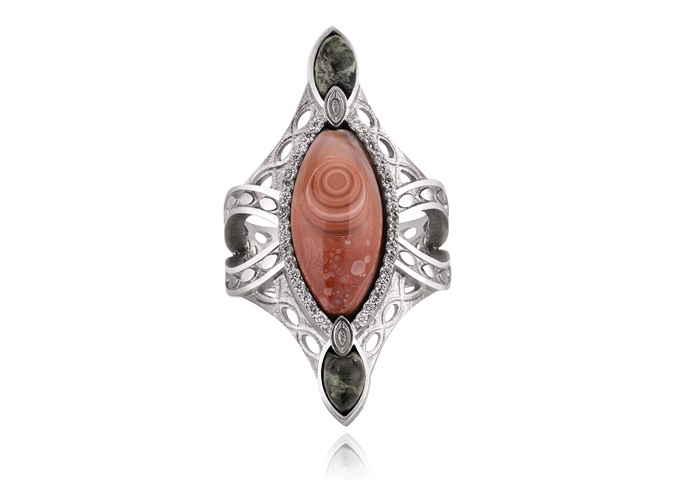
'Dawn ring of the Queen of the Stars' from the Tusaire Collection of Maeve Gillies
Again, new techniques come with a learning curve – and Gillies identified these for 3-printed platinum jewellery, paving the way for further development of the technology.
PGI scores another first with Inoveo Platinum, the first AI-created platinum jewellery alloy. Developed by Anglo American and Alloyed, it is 40 per cent harder than standard platinum alloys. This makes it whiter and brighter and easier to use in jewellery manufacturing.
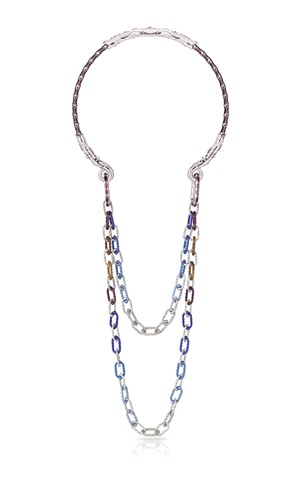
'Torc of Music of the Princess of the Rivers' from the Tusaire Collection of Maeve Gillies
JGW & JNA: 42 Years, 42 Stories is an online series running throughout 2025 to celebrate the 42nd anniversary of Jewellery & Gem WORLD Hong Kong and JNA. A new story of creativity, craftsmanship and innovation will be released every week. Subscribe to free JNA News Alerts to be notified when the next story is out.















